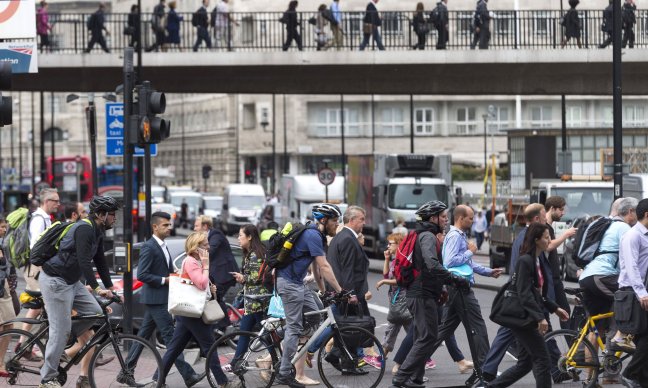Creating green spaces and better connections between people are just two of the ways urban planners can improve mental health.
The frenetic, isolating nature of city life can be a day-to-day struggle for millions of people. An environmental cocktail of densely packed streets and homes, cramped and lengthy commutes and noise pollution as well as significant pockets of poverty and deprivation can take their toll. As a result, mental ill health and urban life are inextricably linked.
With urban areas expected to house two-thirds of the world’s population by 2050 and some cities, such as in China, undergoing unprecedented expansion, the relationship between urban environments and mental health – and what to do about it – is rapidly coming to the fore.
“Public health is an important component of the built environment, but all too often this focuses only on physical health,” says Layla McCay, founder and director of the Centre for Urban Development and Mental Health. The thinktank was set up in 2015 to bring together researchers, policymakers and planners across the globe to push for urban space designs that create mentally healthier cities.

Projects paving the way
A well-designed urban space can have a positive influence on people’s wellbeing and help prevent mental health problems developing or becoming worse, according to McCay.
“Mental health plays a huge role in the overall burden of disease around the entire world,” she says. “It’s prevalent in every country. The statistics do tell us that people who live in cities have a 40% increased risk of depression, a 20% increased risk of anxiety and double the risk of schizophrenia.”
Urban living takes its toll
There is a considerable body of evidence internationally suggesting that urban living, especially poorly designed environments, can have negative effects on mental health. For example, substandard, overcrowded, damp housing has been proven to affect people’s capacity to cope, while the lack of something as basic as a play area can influence children’s wellbeing.
The role of planners and architects
It makes sense, McCay says, to take into account, for example, that improving street lighting and housing layout might reduce fear and anxiety about safety. The same goes for using urban design to produce plentiful open, green spaces that encourage regular interaction in “pro-social spaces” and “a sense of community” with the goal of reducing isolation.
Experts at the WHO Collaborating Centre for Healthy Urban Environments at the University of the West of England (UWE), which works in tandem with the World Health Organisation’s international Healthy Cities Project, concur that urban planning could have a substantial role to play in cities being designed with mental wellbeing in mind.
According to Daniel Black, an urban planner and fellow at the WHO Collaborating Centre, while planning professionals and researchers are increasingly becoming advocates for prioritising mental health in planning decisions, there is still some way to go before decision-makers in governments catch up.
“Mental health is still lagging behind,” he says. “Even physical health is only beginning to get on the radar. How those in control of urban development are integrating health into development is negligible.”
